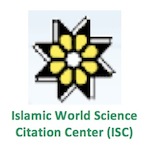


Google Scholar citation report
Citations : 5373
ASEAN Journal of Psychiatry received 5373 citations as per google scholar report
ASEAN Journal of Psychiatry peer review process verified at publons
| Journal Name | ASEAN Journal of Psychiatry (MyCite Report) | ||||
|---|---|---|---|---|---|
| Total Publications | 456 | ||||
| Total Citations | 5688 | ||||
| Total Non-self Citations | 12 | ||||
| Yearly Impact Factor | 0.93 | ||||
| 5-Year Impact Factor | 1.44 | ||||
| Immediacy Index | 0.1 | ||||
| Cited Half-life | 2.7 | ||||
| H-index | 30 | ||||
| Quartile |
|
- Anxiety Disorders
- Behavioural Science
- Biological Psychiatry
- Child and Adolescent Psychiatry
- Community Psychiatry
- Dementia
- Community Psychiatry
- Suicidal Behavior
- Social Psychiatry
- Psychiatry
- Psychiatry Diseases
- Psycho Trauma
- Posttraumatic Stress
- Psychiatric Symptoms
- Psychiatric Treatment
- Neurocognative Disorders (NCDs)
- Depression
- Mental Illness
- Neurological disorder
- Neurology
- Alzheimer's disease
- Parkinson's disease
Abstract
Stop Thinking That Its Normal: An Exploratory Study of Consequences of Intimate Partner Violence in Central India
Author(s): Shraddha Khare, Sanjay Kumar, Pramod Kumar Rai, Blessy DavidIntroduction: Fuelled by mandatory stay-at-home rules, physical distancing, economic uncertainties, and anxieties caused by the pandemic, domestic violence has increased globally. Across the world, countries including China, the United States, the United Kingdom, Brazil, Tunisia, France, Australia, and others have reported cases of increased domestic violence and intimate partner violence. India, where gender-based violence is quite common, has also shown similar trends during lockdown caused by the COVID-19 Pandemic. Intimate Partner Violence (IPV) is a serious, preventable public health problem that affects millions of families across the globe. “Intimate partner violence” describes physical violence, sexual violence, stalking, or psychological harm by a current or former partner or spouse. This type of violence can occur among heterosexual or same-sex couples and does not require sexual intimacy. Objective: The present study is aimed to explore the prevalence and factors leading to domestic violence during COVID-19 pandemic in central India. Methods: The study was conducted in the Sagar division of Madhya Pradesh. Focused group discussions (N=4) were conducted among the married women of rural and urban areas. Results: Husband’s alcoholism, unemployment, gender role, familial instigation, and intergenerational transfer of violent behavior were the significant causes reported in rural areas. At the same time, women from urban areas attributed ego clashes, the impact of peers, gender roles, and poor emotion regulation as the causes for domestic violence. In addition, dowry, gender discrimination, and familial instigation were reported to trigger this violence. Women from both communities reported that the reactions to violence, awareness for rights, tendency to seek help from the government, and social support affect domestic violence. In both societies, the extent of harm from verbal and physical violence was similar irrespective of the marriage type and time duration. Severe impacts of domestic violence on the physical and mental health of women and children of both communities were reported. Most importantly, the nature of social interference, social support, and outcomes was reported differently in both communities. Women experienced the role of social support, family values, law, and governmental policies as a controlling mechanism to violence. Conclusion: Intimate partner violence is a cause of concern for women and children’s physical and mental health. Preventive measures are needed to be addressed along with curative measures such as laws and policies.


























